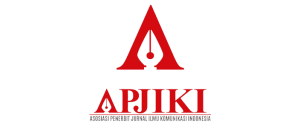Peningkatan Pola Hidup Sehat Melalui Food Combining Di Ranah Komunikasi Kesehatan
DOI:
https://doi.org/10.30656/lontar.v3i3.540Abstract
Healthy lifestyle is an ideal lifestyle for everyone and an effort to achieve that goal. Various things were done by people, for example adjusting the costumized diet that needed of the body with a mix of carbohydrates, protein , and other elements require a certain technique that can be digested by the balance of the composition there in .
Food Combining is one way to achieve a healthy lifestyle through healthy diet . Where the core of food combining is fresh and natural foods , consuming a combination of food by following the cycle of metabolism , maintaining acid-base balance of the body , and does not need to measure the consumption of food
The theoretical approach used is the Health Belief Model ( Health Belief Model ) proposed by Rosenstock in 1974 which has the concept that the behavior of a person who can provide assessment and elaboration of socio - psychological health . Thus increasing the knowledge and attitudes about the vulnerability and the efficacy of the treatment can affect a person's decision on health behavior .
Furthermore , analytical approach in the literature by collecting a number of journals or other publications related to the problems examined as well as the disclosure of the relevance of theory and problems are discussed. With the Health Belief Model approach is expected confidence in the specific health problems , are effective in treating and preventing the diseases, can change the bad habits of the society in treating diseases, and may be receptive to advice to take health measures .
Â
Keywords : Food Combining, Health Belief Model, Healthy Lifestyle                 Â
Â
Downloads
Published
Issue
Section
License
By submitting an article to the journal, the author(s) agree to transfer the published article's copyright to the journal, which will act as the publisher. This means the journal will have the right to publish the article in various forms, including reprints. The journal will maintain the publishing rights to the published articles.
In line with the license, authors and third parties (readers, researchers, and others) are allowed to share and adapt the material. In addition, the material must be given appropriate credit, provided with a link to the license, and indicated if changes were made. If authors remix, transform, or build upon the material, authors must distribute their contributions under the same license as the original.






